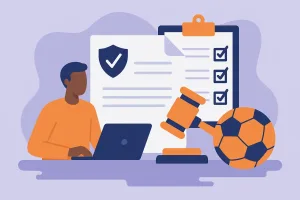Introduction
Project expense tracking is a critical component that ensures financial resources are utilized efficiently and effectively. This process involves monitoring and recording all expenditures related to a project, from initial budgeting to final costs. By maintaining a clear and accurate account of expenses, project managers can make informed decisions, adjust budgets as necessary, and ultimately drive the project toward successful completion.
Effective expense tracking not only aids in financial management but also plays a significant role in enhancing stakeholder communication. Stakeholders, including team members, clients, and external partners, have a vested interest in the financial health of a project. When project expenses are tracked meticulously, it fosters transparency and builds trust among stakeholders. They are more likely to feel satisfied and engaged when they are kept informed about how funds are being allocated and spent. This connection between expense tracking and stakeholder satisfaction is crucial, as it can influence the overall perception of the project’s success and the project’s relationship with its stakeholders.
In this blog, we will delve into the various aspects of project expense tracking and its impact on stakeholder communication. We will explore best practices for effective expense tracking, discuss tools and techniques that can facilitate this process, and highlight real-world examples of how improved financial oversight has led to better stakeholder engagement. By the end of this section, readers will gain a comprehensive understanding of the importance of project expense tracking and its relevance to fostering positive communication with stakeholders.
Understanding Project Expense Tracking
Effective project expense tracking is a critical component of project management that directly influences stakeholder communication. By maintaining a clear overview of project costs, project managers can foster transparency, build trust, and ensure that all parties are aligned with the project’s financial status. Here’s a comprehensive overview of what project expense tracking entails.
Components of Project Expense Tracking
Project expense tracking involves several key components that help in monitoring and managing costs throughout the project lifecycle:
- Budgeting: Establishing a financial plan that outlines expected costs for various project components, including labor, materials, and overheads. This serves as a baseline for tracking expenses [7].
- Cost Estimation: Accurately predicting the costs associated with project activities. This includes both direct costs (e.g., salaries, materials) and indirect costs (e.g., administrative expenses) [13].
- Expense Recording: Systematically documenting all incurred expenses as they occur. This can include invoices, receipts, and other financial documents that provide evidence of spending [11].
- Variance Analysis: Comparing actual expenses against the budget to identify discrepancies. This analysis helps in understanding where the project may be over or under budget, allowing for timely adjustments [11].
- Reporting: Generating regular reports that summarize financial performance, which can be shared with stakeholders to keep them informed about the project’s financial health [11].
Common Tools and Software for Tracking Expenses
To facilitate effective project expense tracking, various tools and software solutions are available. These tools help project managers streamline the tracking process and enhance communication with stakeholders:
- Project Management Software: Platforms like Microsoft Project, Asana, and Trello often include expense tracking features that allow teams to monitor costs alongside project tasks.
- Accounting Software: Tools such as QuickBooks and FreshBooks provide robust expense tracking capabilities, enabling project managers to manage budgets, track expenses, and generate financial reports.
- Spreadsheets: Many project managers still rely on Excel or Google Sheets for tracking expenses due to their flexibility and ease of use. Custom templates can be created to suit specific project needs.
- Expense Management Apps: Applications like Expensify and Zoho Expense allow for real-time expense tracking and reporting, making it easier for teams to submit and approve expenses on the go [6].
Differentiating Between Direct and Indirect Expenses
Understanding the distinction between direct and indirect expenses is crucial for accurate project expense tracking:
- Direct Expenses: These are costs that can be directly attributed to a specific project or activity. Examples include salaries of project team members, materials purchased for the project, and subcontractor fees. Tracking these expenses is essential for determining the true cost of project deliverables [13].
- Indirect Expenses: These costs are not directly tied to a specific project but are necessary for the overall operation of the organization. Examples include utilities, administrative salaries, and office supplies. While these expenses may not be directly charged to a project, they still impact the overall budget and should be monitored to ensure financial health [13].
The Role of Stakeholders in Project Management
Stakeholders play a pivotal role in shaping the direction and success of a project. Understanding the various types of stakeholders and their influence is essential for effective project expense tracking and communication. Here are some key points to consider:
Types of Stakeholders
- Clients: Often the primary stakeholders, clients have a vested interest in the project’s outcome. Their expectations and feedback can significantly impact project decisions and direction.
- Team Members: These individuals are responsible for executing the project tasks. Their insights and experiences can provide valuable information regarding budget allocations and expense tracking.
- Upper Management: This group includes executives and senior leaders who provide strategic oversight. Their approval is often necessary for budget changes and resource allocation, making their engagement crucial for expense management.
- Suppliers and Vendors: External parties that provide goods or services necessary for project completion. Their reliability and pricing can directly affect project costs.
- Regulatory Bodies: In some industries, compliance with regulations is essential. These stakeholders can influence project timelines and budgets through their requirements.
Influence of Stakeholders on Project Outcomes
Stakeholders have a profound impact on project outcomes through their decisions, feedback, and engagement levels. Their involvement can lead to:
- Enhanced Decision-Making: Stakeholders provide diverse perspectives that can lead to more informed decisions regarding budget allocations and project adjustments.
- Risk Mitigation: Engaging stakeholders early can help identify potential risks related to budget overruns or resource shortages, allowing for proactive measures to be taken.
- Increased Support: When stakeholders are kept informed about project expenses and progress, they are more likely to support necessary changes and provide additional resources if needed.
Importance of Transparency and Trust
Effective communication regarding project expenses fosters transparency and builds trust among stakeholders. Here’s why this is crucial:
- Open Dialogue: Regular updates on budget status and expense tracking can prevent misunderstandings and misalignments between stakeholders. This open communication encourages collaboration and problem-solving.
- Accountability: When stakeholders are aware of how funds are being utilized, it promotes accountability among project managers and team members. This can lead to more responsible spending and resource management.
- Strengthened Relationships: Trust is built when stakeholders feel informed and involved in the project. This can lead to stronger partnerships and a more supportive environment for project success.
How Effective Expense Tracking Enhances Stakeholder Communication
Effective expense tracking is a critical component of project management that significantly influences communication with stakeholders. By maintaining accurate and timely records of project expenses, project managers can foster transparency, facilitate informed decision-making, and minimize misunderstandings. Here are the key benefits of effective expense tracking on stakeholder communication:
- Fostering Transparency: Accurate expense tracking provides stakeholders with a clear view of how funds are being utilized throughout the project. This transparency is essential for building trust, as stakeholders can see that their investments are being managed responsibly. When stakeholders are kept informed about financial allocations and expenditures, it enhances their confidence in the project management team and the project’s overall direction [1][8].
- Timely Reporting for Informed Decision-Making: Regular and timely reporting of expenses allows stakeholders to make informed decisions based on the current financial status of the project. When project managers provide updates on budget utilization and any variances from the planned budget, stakeholders can assess the project’s health and make necessary adjustments. This proactive communication helps in aligning stakeholder expectations with project realities, ultimately leading to better strategic decisions [3][11].
- Minimizing Misunderstandings and Conflicts: Effective expense tracking plays a crucial role in reducing misunderstandings and potential conflicts among stakeholders. By having a well-documented financial trail, project managers can address any concerns or discrepancies that may arise. Clear communication regarding budget changes, unexpected expenses, or cost overruns can prevent disputes and foster a collaborative environment. When stakeholders are aware of the financial challenges and the rationale behind budgetary decisions, it mitigates the risk of conflict and enhances cooperative relationships [4][11].
Real-World Examples of Successful Expense Tracking
Effective project expense tracking is not just about managing budgets; it plays a crucial role in enhancing communication with stakeholders. By providing transparency and fostering engagement, project managers can significantly improve stakeholder relationships. Here are some case studies and examples that illustrate the impact of effective expense tracking on stakeholder communication.
- Healthcare IT Project: In a healthcare IT project, the project manager implemented a robust expense tracking system that included monthly financial reports shared with stakeholders. This transparency allowed stakeholders to understand the financial health of the project, leading to increased trust and engagement. Stakeholders appreciated being informed about spending patterns and any changes in scope, which helped them feel more involved in the decision-making process [6].
- Construction Industry: A construction project manager utilized a cloud-based expense tracking tool to monitor project costs in real-time. By holding regular meetings to review the budget and financial status, stakeholders were kept in the loop regarding any potential overruns or savings. This proactive communication not only mitigated concerns but also encouraged stakeholders to provide input on budget adjustments, fostering a collaborative environment [8].
- Marketing Campaign: In a marketing project, the team adopted a detailed expense tracking system that allowed for the categorization of costs associated with different campaign elements. By sharing these insights with stakeholders, the project manager was able to highlight the return on investment (ROI) for various marketing strategies. Stakeholders felt more engaged as they could see the direct impact of their investments, leading to more informed discussions about future campaigns [4].
- IT Software Development: A software development project faced challenges with stakeholder engagement due to unclear financial reporting. By implementing a structured expense tracking process, the project manager was able to provide stakeholders with clear, concise updates on budget utilization and project milestones. This clarity not only improved stakeholder satisfaction but also led to more constructive feedback and support for the project [10].
Lessons Learned and Best Practices
From these examples, several key lessons and best practices emerge that can enhance stakeholder communication through effective expense tracking:
- Regular Updates: Consistent communication through regular updates and reports helps keep stakeholders informed and engaged. This practice builds trust and allows for timely feedback [6][8].
- Transparency: Being open about financial matters, including potential risks and changes in scope, fosters a sense of partnership among stakeholders. Transparency can lead to more collaborative decision-making [4][10].
- Utilization of Technology: Leveraging cloud-based tools for real-time expense tracking can streamline communication and provide stakeholders with immediate access to financial data. This accessibility enhances their ability to engage meaningfully with the project [8].
- Tailored Communication: Understanding the specific interests and concerns of different stakeholders can help project managers tailor their communication strategies. Providing relevant financial insights that align with stakeholder priorities can enhance engagement [6][10].
Best Practices for Project Expense Tracking
Effective project expense tracking is crucial for maintaining transparency and fostering strong communication with stakeholders. By implementing best practices in expense tracking, project managers can enhance their reporting processes, ensuring that stakeholders are well-informed and engaged throughout the project lifecycle. Here are some practical strategies to improve expense tracking and communication:
1. Utilize Effective Tools and Methodologies
- Expense Tracking Software: Invest in dedicated expense tracking tools that automate data entry and reporting. Software solutions can streamline the process, reduce errors, and provide real-time insights into project finances. Examples include tools like QuickBooks, Expensify, or Microsoft Project, which can help in tracking expenses efficiently [13].
- Automated Workflows: Implement automated workflows for expense approvals and tracking. This can help route requests to the appropriate stakeholders, ensuring timely approvals and reducing bottlenecks in communication [10].
- Visual Dashboards: Use visual dashboards to present financial data clearly. Dashboards can provide stakeholders with a quick overview of the project’s financial health, including budget variances and expense trends, making it easier to understand complex data [15].
2. Maintain Regular Updates and Reporting Schedules
- Scheduled Reporting: Establish a regular reporting schedule to keep stakeholders informed about the project’s financial status. Weekly or bi-weekly updates can help in addressing any concerns promptly and maintaining transparency [3][13].
- Narrative Summaries: Alongside raw data, provide narrative summaries that highlight the project’s status, achievements, and challenges. This approach ensures that stakeholders receive context around the numbers, making the information more digestible [4].
- Feedback Mechanisms: Regularly gather feedback from stakeholders through surveys or meetings to assess the effectiveness of your communication. This can help identify areas for improvement and ensure that the information provided meets their needs [8].
3. Train Team Members on Expense Tracking Procedures
- Comprehensive Training: Conduct training sessions for team members on the expense tracking tools and methodologies being used. Ensuring that everyone understands the processes will lead to more accurate data entry and reporting [15].
- Active Listening and Feedback: Encourage a culture of active listening where team members can share their insights and challenges regarding expense tracking. This can lead to continuous improvement in communication practices and tracking efficiency [6].
- Documentation of Procedures: Create clear documentation outlining the expense tracking procedures. This resource can serve as a reference for team members, helping to maintain consistency and accuracy in tracking expenses [15].
By adopting these best practices, project managers can significantly enhance their expense tracking processes, leading to improved communication with stakeholders. This proactive approach not only fosters trust but also ensures that projects remain on budget and aligned with stakeholder expectations.
Challenges and Solutions in Expense Tracking
Effective project expense tracking is crucial for maintaining clear communication with stakeholders. However, project managers often face several challenges that can hinder this process. Below are some common obstacles along with actionable solutions to enhance expense tracking and improve stakeholder communication.
Common Challenges
- Data Accuracy: Inaccurate data can lead to misinformed decisions and erode stakeholder trust. This often arises from manual entry errors or outdated information systems [8].
- Compliance Issues: Ensuring compliance with financial regulations and internal policies can be complex. Non-compliance can result in legal repercussions and damage to the project’s credibility [8].
- Stakeholder Engagement: Engaging stakeholders effectively can be challenging, especially when they are not kept informed about financial changes or project status. This can lead to misunderstandings and a lack of support [2].
Actionable Solutions
Enhancing Data Accuracy:
- Implement automated expense tracking systems that minimize manual data entry. This reduces the likelihood of errors and ensures that all financial data is up-to-date and accurate [6].
- Regularly audit expense reports to identify discrepancies and rectify them promptly. This practice fosters transparency and builds trust with stakeholders [4].
Addressing Compliance Issues:
- Develop a compliance checklist that aligns with both internal policies and external regulations. Regular training sessions for the project team can ensure everyone is aware of compliance requirements [8].
- Utilize software solutions that include compliance tracking features, which can alert project managers to potential issues before they escalate [10].
Improving Stakeholder Engagement:
- Schedule regular updates and status reports that include financial insights. This keeps stakeholders informed and engaged, allowing them to provide feedback and support as needed [6].
- Foster open lines of communication by using collaborative tools that allow stakeholders to access real-time financial data. This transparency can enhance trust and collaboration [9].
Leveraging Technology
The significance of leveraging technology in expense tracking cannot be overstated. By adopting advanced project management software, organizations can streamline the expense tracking process, making it easier to collect, analyze, and report financial data. Key benefits include:
- Real-Time Data Access: Stakeholders can view up-to-date financial information, which aids in informed decision-making and enhances communication [14].
- Integration with Other Systems: Technology can facilitate the integration of expense tracking with accounting and ERP systems, ensuring that all financial data is consistent and easily accessible [10].
- Automated Reporting: Automated reporting features can generate insights and summaries that are easily shared with stakeholders, reducing the time spent on manual report creation and improving overall communication efficiency [12].
Conclusion
Effective expense tracking plays a pivotal role in enhancing communication with stakeholders. By meticulously monitoring project expenses, project managers can provide stakeholders with accurate and timely financial updates, fostering transparency and trust. This clarity not only helps in managing expectations but also empowers stakeholders to make informed decisions regarding resource allocation and project direction.
Moreover, implementing best practices in expense tracking—such as utilizing dedicated software tools, establishing clear reporting protocols, and regularly reviewing financial data—can significantly improve project outcomes. These practices ensure that all stakeholders are aligned with the project’s financial status, which is crucial for maintaining engagement and support throughout the project lifecycle.
We encourage project managers to prioritize expense tracking as a fundamental aspect of their communication strategy. By doing so, they can enhance stakeholder relationships and drive project success.
Find out more about Shaun Stoltz https://www.shaunstoltz.com/about/.
This post was written by an AI and reviewed/edited by a human.


